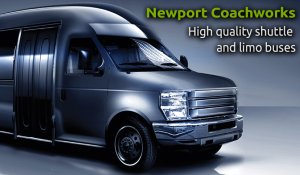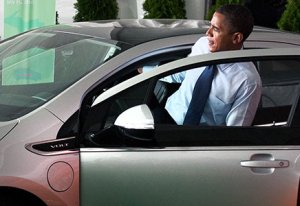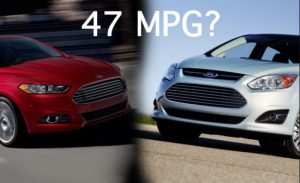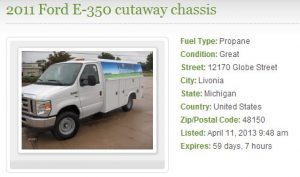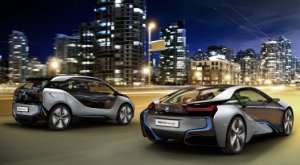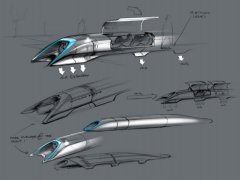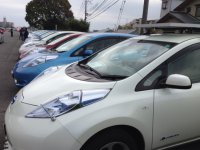 Here’s my take on top news stories of the week:
Here’s my take on top news stories of the week:
- One of the gains made by selling plug-in electric vehicles in California is gaining zero emission vehicle (ZEV) credits and selling them to your competitors. Nissan Motor Co. now joins Tesla Motors in selling green-car credits. California requires large automakers to sell electric or other ZEVs in proportion to their market share in the state. Nissan has sold enough Leafs that it can sell its excess carbon credits to other automakers. The Tesla Model S can generate up to seven ZEV credits because of its range of as much as 300 miles per charge and the option of swapping its battery pack with a charged one (the company will open its first battery swap facility by year’s end). The Leaf earns three credits through the state program.
- Volvo Trucks is upping its green credentials even more – Through its Climate-Smart City Distribution project, emissions from 400 distribution trucks were cut between 30% and 80% over three years. Volvo worked with several partners to improve the efficiency of distribution operations in Gothenburg, Sweden. Conventional diesel distribution trucks were replaced with vehicles using renewable fuels – biodiesel, biogas, and dimethyl ether (DME); hybrid technology; and methane-diesel fuel. Volvo and Mack Trucks are committed to bringing DME powered trucks to roads soon; earlier this year, Volvo unveiled plug-in hybrid buses as part of a field test.
- Toyota is optimistic that its next generation Prius will get even better fuel economy and cost even less. Improvements will come through using lighter materials and significant advances in battery, electric motor, and gas engine technologies, the company said. Toyota thinks its miles per gallon rating on the hatchback Prius will gain from 50 mpg to near 55. It’s likely to come out in 2015. It next generation batteries will have higher energy density. For the Prius and other Toyota models, the automakers is working on a diverse set of batteries – lithium ion, nickel metal hydride, solid state, lithium air, and magnesium.
- Electric Drive Transportation Association (EDTA) and its GoElectricDrive Foundation have a partnership with Green Sports Alliance dedicated to improve the environmental performance of sports teams and facilities. Since being founded in March 2011 by six professional teams and five venues, Green Sports Alliance now has over 170 professional and collegiate teams from 15 different sports leagues. Members include Anaheim Ducks, Baltimore Ravens, Boston Red Sox, LA Dodgers, Miami Marlins, New York Jets, and University of Texas Longhorns. EDTA and Green Sports Alliance will show organizations the benefits of integrating electric drive in their fleets, and giving fans a place to charge up their EVs while watching a ballgame, said Brian Wynne, president of EDTA.
- The 2013 AltCar Fleet Conference and Expo will be put on by the City of Santa Monica on Sept. 20-21. It tends to offer the best green vehicle display and ride and drive with just about e everything you can think of available to check out. As for speakers at the Friday fleet conference, these will include Terry Tamminen, former secretary of the California Environmental Protection Agency; David Friedman, deputy administrator of the National Highway Transportation Safety Administration; JR DeShazo, director of the Luskin Center at UCLA; Randall Winston, special assistant to the executive secretary, office of Governor Edmund G. Brown, Jr.; Jon Coleman, fleet sustainability & technology manager for Ford Motor Co.; and Richard Battersby, Public Sector Fleet Manager of the Year, from East Bay Clean Cities. Vehicle debuts will include Southern California Gas Company’s west coast introduction of four new prototype consumer vehicles built to run on compressed natural gas and capable of using gasoline as backup.
- CleanFUEL USA has just brought in Blair Poulsen as its director of sales; Poulsen brings more than 23 years of propane industry experience to the company. He was most recently regional sales and marketing director for Heritage Propane and AmeriGas Propane, and currently serves on the Nevada Board of Regulation of Liquefied Petroleum Gas. Poulsen will lead a team serving clients in propane refueling infrastructure and OEM vehicle technology, including Thomas Built Bus, Collins Bus, General Motors Corp., and Freightliner Custom Chassis Corp.
- You think regenerative braking is pretty cool? How about a regenerative suspension? German automotive parts maker ZF says it’s bringing the first technology of its kind to the world. ZF Friedrichshafen AG has teamed up with Levant Power Corp. to product a system that works like regen braking, recapturing energy when the suspension gets put in motion. It would take away the large amount of energy needed by suspension systems and increase fuel economy.
- Is your community burdened by dirty coal? How about converting over to cleaner natural gas? Navigant Research is hosting a webinar on Sept. 10 that will explore that topic. Utilities are shutting down a lot of aging coal-powered plants through 2020. There are costs and complexities involved in switching over to natural gas that will be discussed by panelists, including examples of plants that have gone through these conversions in recent years.
- States like California are digging into the best financial models for reducing traffic congestion and repairing worn out roads. Vehicle Miles Traveled (VMT) taxes, gasoline tax increases, road tolls, increasing vehicle licensing and registration fees, transportation-focused sales tax, and infrastructure bonds – and all they pluses and minuses – are explored in an article that was just published in Westways. It’s a very tough issue that states are going through.
- Reincarnated electric carmaker Detroit Electric will still be making its all-electric SP:01, only it won’t be happening in Detroit. Its Lotus-based sports car will be made in the Netherlands, and production will start in the fourth quarter of this year. The company was going to bring jobs to Detroit initially – 2,500 cars per years with a workforce of 100. Plans started being delayed in June, as the company said it couldn’t find the right manufacturing location in Wayne County, Mich., where Detroit is located.







